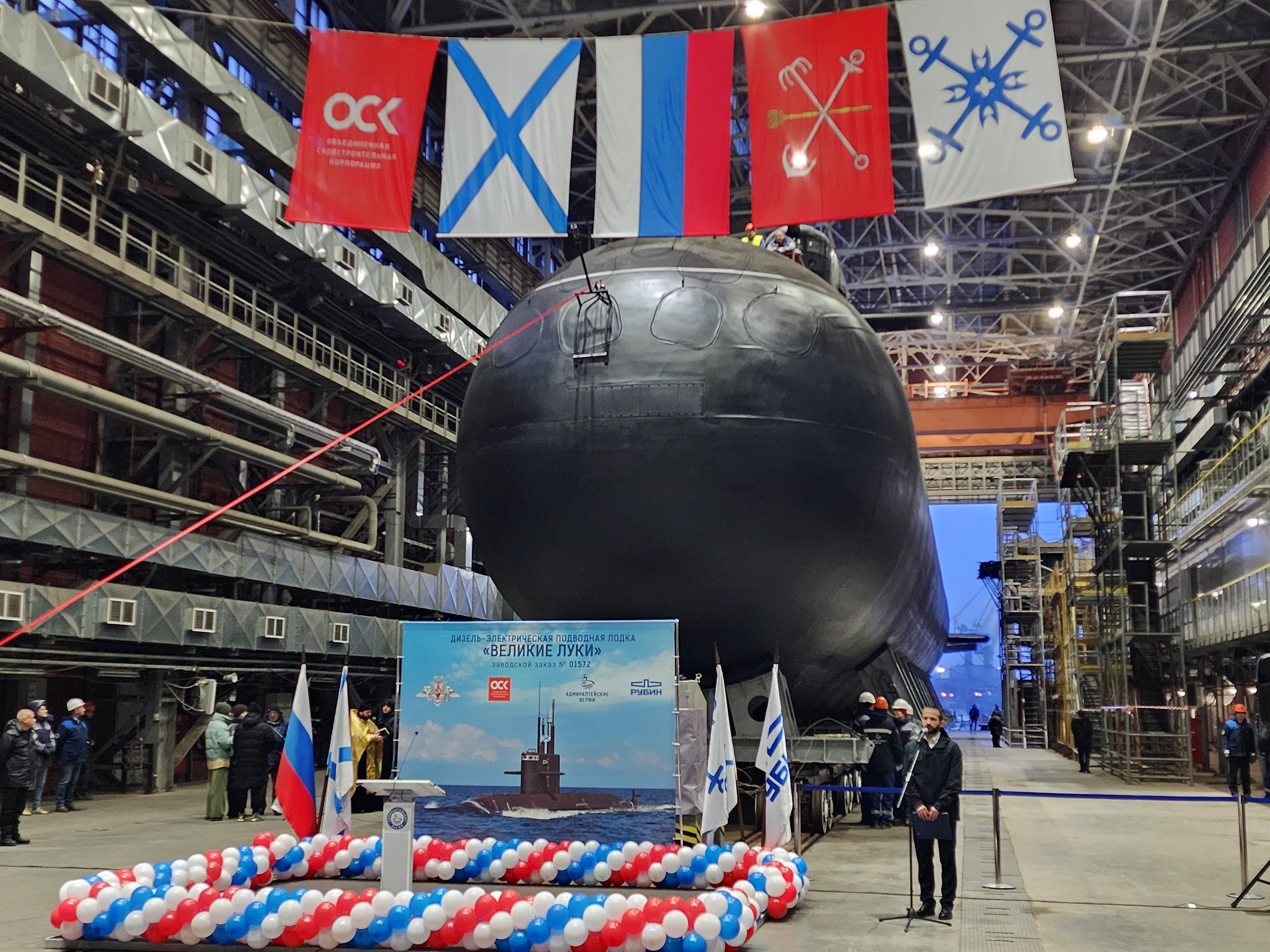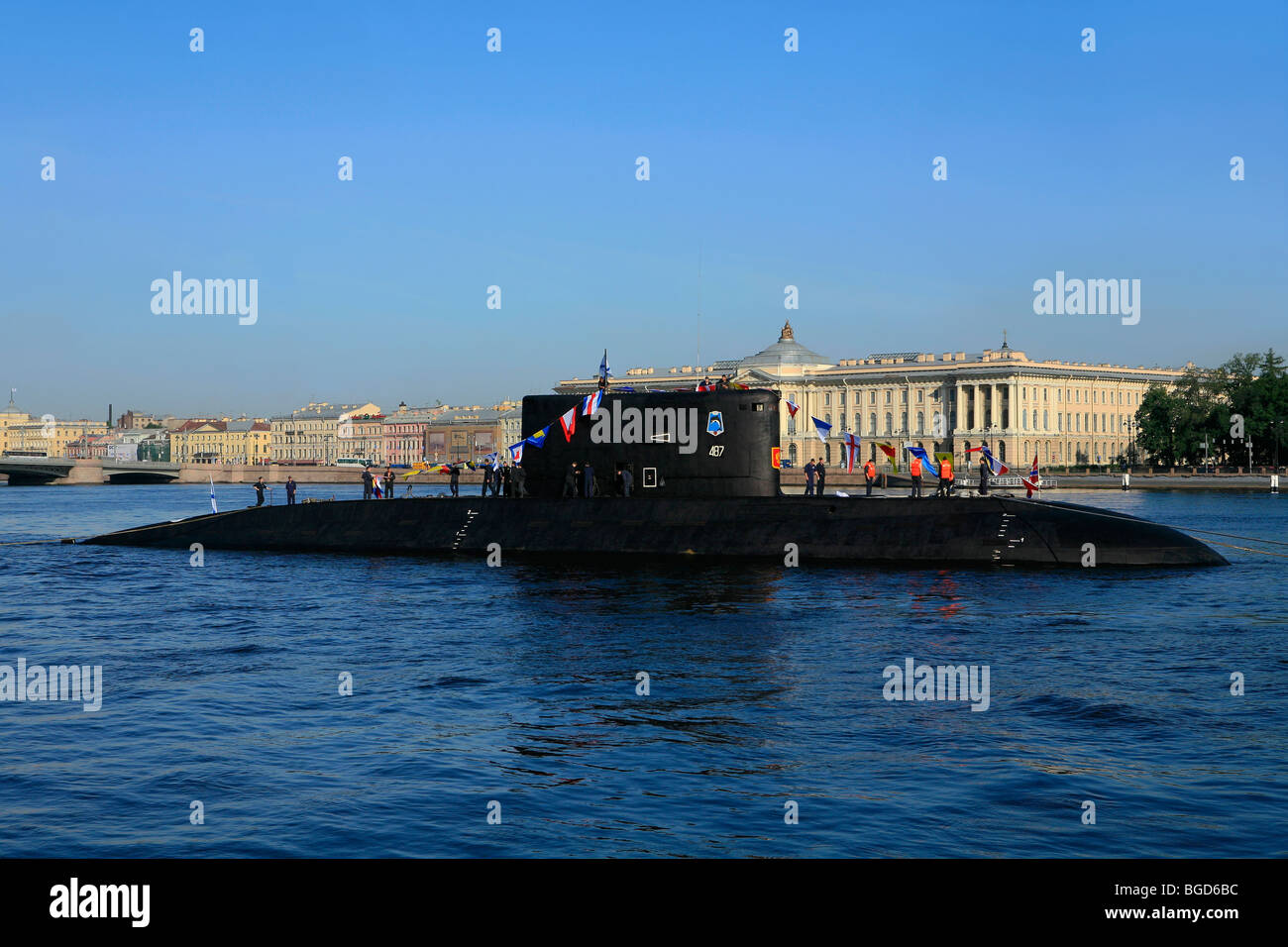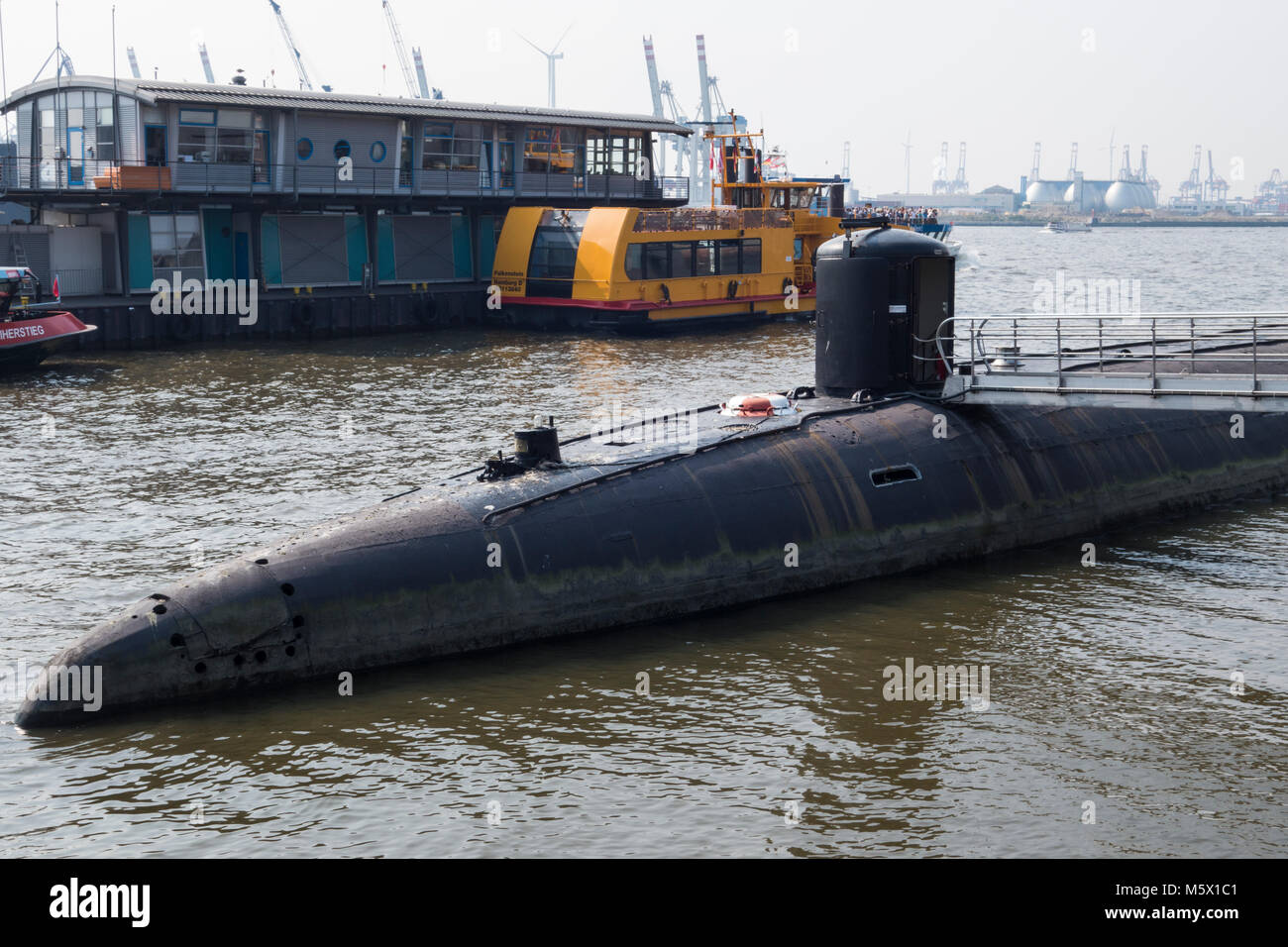Lada Class Submarine - The Amur-class submarine (named after the Amur River) is one of the latest designs of Russian submarines. It is advertised as an export version of the Lada class, an upgraded version of the Kilo class submarine with improved acoustic infiltration, new combat systems and an air independent propulsion (AIP) option.
As announced, Amur-1650 is larger and designed for longer missions. The Amur-950 is armed with the VLS missile system, capable of delivering salvo fire at several pre-designated targets. The hydroacoustic visibility of these submarines is several times lower than that of older Kilo-class submarines.
Lada Class Submarine

Both designs are equipped with a new generation of electronic warfare, created on the basis of the latest saws and technologies. They can be equipped with AIP fuel cells, which greatly improves survivability and submerged range. The AIP capability can be added to the hull expansion plug either during the construction of a new build or when converting existing ships.
H I Sutton
According to the builder, these vessels can operate in all areas of the world, except for areas with solid ice cover, in all weather conditions, in shallow water and at great depths.
The chief designer of the Central Design Bureau "Rubin" for "Amur-1650" and "Amur" -950 - Yuri Kormilitsyn. As a further development of the ideas already implemented on the Kilo-class submarines, the Amur-class ships are single-hull, with a minimum displacement, which reduces the noise signature and improves the quality of the propulsion. A brand new permanent magnet main motor is under development/construction and is designed to provide high power conversion efficiency at low cruising speeds.
At the Army-2022 forum, they saw another development - the Amur E600 - a submarine with a fully electric propulsion and without sails. The project reportedly used a submarine with a lithium-based battery that could provide it with autonomy for 17 days. It was unclear whether design would move to construction.
Ships of this class have not yet been built. Russia offered the submarine for sale to India, but in 2005 India ordered Scorpène-class submarines instead. On July 4, 2013, Rosoboronexport announced that it would offer the Amur 1650 to the Moroccan Navy if they announced a tender for new submarines.
Kilo Class: Why Is This Russian Submarine Called The \
In 2021, negotiations were underway between Russia and Argentina for Tandanor to produce an Amur 1650 list as part of a larger arms agreement. Admiralty shipyards are building Project 677 Lada diesel-electric submarines for the Russian Navy. The class is also referred to as the Petersburg class, after the lead submarine. The Lada class is replacing the Kilo class submarines.
The lead ship of the St. Petersburg class (B-585) was laid down in December 1997 and launched in October 2004. The submarine was handed over to the Russian Navy in April 2010 and commissioned in May 2010.
The keel of the second submarine Kronstadt (B-586) was laid in July 2005, and the launching ceremony took place in September 2018.

The laying ceremony for the third submarine, formerly known as Sevastopol (B-587), took place in November 2006. The submarine was renamed Velikiye Luki and re-laid down in February 2015 due to redesign after continuous delays. It is expected that Velikiye Luki will be commissioned in 2021.
Lada Class Diesel Electric Submarine (infographics)south Front
In June 2019, the Russian Ministry of Defense and the Admiralty Shipyards signed a contract for two more Project 677 Lada submarines. The planting of the submarines is scheduled for 2022, and commissioning is scheduled for 2025 and 2027, respectively.
The Project 677 submarine is an improved version of the Kilo Project 636 with a quieter and more powerful propulsion system and new combat systems. Submarines of the fourth generation can be involved in anti-submarine (ASW) and anti-surface ship (AsuW) operations, defense of naval bases, reconnaissance and patrolling.
An export variant of the Lada Class, Project 1650 Amur Class, was developed for markets such as India and China. The Amur class is offered in various configurations with a displacement of 550 to 1850 tons and various weapon systems.
Diesel-electric submarines of the Lada class were developed by the Russian design bureau Rubin. The boat has a single hull design. The surface displacement was reduced to 1765 tons from 2300 tons for the Kilo-class double-hulled submarine.
Russian Navy Lada Class Diesel Electric Submarine Kronstadt Conducts High Speed Tests
Full dive speed has been increased from 19k to 21k, and crew size has been reduced from 52 to 35.
The submarine has a cutting profile and is equipped with modern torpedo and missile systems. The hull is covered with a new anti-sonar coating to reduce acoustic visibility.
Lada Class uses hydrogen-oxygen fuel cells to generate electricity for small operation. The submarine is equipped with an automatic combat control system "Lithium". The integrated system controls the combat and technical systems of the submarine.

The Lada class has a surface speed of 10 km and a submerged speed of 21 km. The power plant provides a submerged range of 7,500 nautical miles at an economical speed of 3 km. The maximum diving depth is 300m. Underwater displacement of the ship is 2700 tons.
Rubin Offers 80% Indigenous Amur Submarine To India The Russian Design Bureau Will Bid With Larsen & Toubro For The P75(i) Program
The Lada class is armed with Club-S submarine cruise missiles. The missile can be launched from standard torpedo tubes.
Club-S carries up to 400 kg of warheads and can hit land and sea targets at ranges up to 300 km. The ship's six 533mm torpedo tubes can launch up to 18 torpedoes, anti-submarine and anti-ship missiles.
Submarines of the Lada class are equipped with modern sonar equipment, such as bow, side and towed sonar. The Lira hydroacoustic complex with quasi-conformal antennas (along the submarine hull) makes it possible to detect low-noise targets located at long distances.
The ship has an inertial navigation system for safe navigation and determination of movement parameters. The system ensures the accuracy of airborne weapons, providing guidance during prolonged underwater operations. Countermeasures are provided by an electronic measurement support system (ESM), a radar warning receiver and a radio direction finder.
Project 677 Lada Class / Project 1650 Amur Class Submarines
The power plant of the submarine combines two diesel generators, one main electric propulsion unit, two air-independent propulsion systems (wind turbines) and a single-shaft drive on a seven-bladed propeller.
The AIP system based on oxygen-hydrogen fuel cells increases the submerged life span of the Lada Class from 15 to 45 days. It also reduces noise levels as it does not require frequent recharging of the batteries from diesel generators.
The diesel engine operates in diving mode for some time to increase the survivability of the submarine. The submarine also has an extended battery life.

Virginia class submarine interior, virginia class submarine model, columbia class submarine, lada submarine, ohio class submarine model, gato class submarine blueprints, gato class submarine model, lada class, virginia class submarine layout, virginia class submarine, ohio class submarine, balao class submarine model


0 Comments